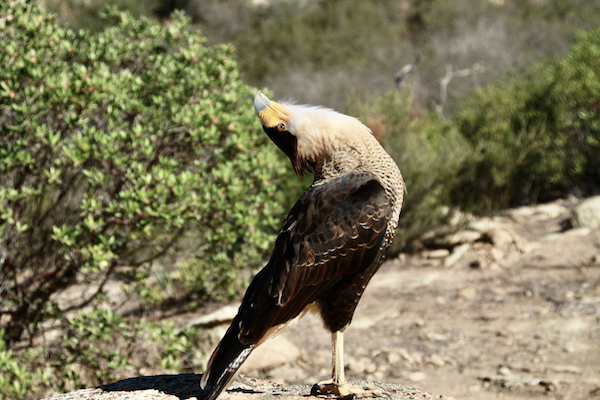Crested Caracara


Caracara Plancus
POPULATION STATUS
Threatened
BODY LENGTH
Up to 26 inches
WINGSPAN
Up to 52 inches
WEIGHT
2.0-3.5 pounds
Who They Are
Larue: Hatched in 2019, Crested Caracara (Caracara cheriway)
Where They Originate
Crested Caracaras are native to Southwestern US down through South America
Their Role at Avian Behavior International
Perhaps one of the most beloved of the Avian Behavior feathered ambassador crew, Larue is well known for his distinct character, vocalizations, and sensitive temperament. Many Larue fans have never even heard of a caracara upon following his antics on social media. Larue helps tell the stories of biodiversity as well, as many species of caracara are largely unstudied. He endears us to the many ways birds interact with their environment, and how many challenges of the birds we don’t know much about are important to understand before it’s too late.
How You Can Meet Him
Hike with Larue during our Hawk Walk with Caracara, Extreme Bird of Prey Experience , Elite Experience, where you can watch him strut his stuff up the hillside. You can also meet Larue during an Animal Trainer for a Day experience. With Larue, you never know what is going to happen on a walk (neither do we!).
Likes and Dislikes
Likes: Toy lizards, baths, and long walks on the hillside
Dislikes: Different textured ground
What You Might Not Know About These Birds
Caracaras are largely scavengers and show up to carcasses alongside vultures. They will hunt in some cases for small mammals and reptiles. There are 10 species of Caracara, one of which specializes in eating wasps.
The name caracara is onomatopoeiatic, coming from the term onomatopoeia. This means they are named after the way their calls sound (to scientists, we guess! ). Chickadees are also onomatopoeiatic names, meaning their calls sound like the bird is famously saying “chick-a-dee-dee-dee-dee.”

